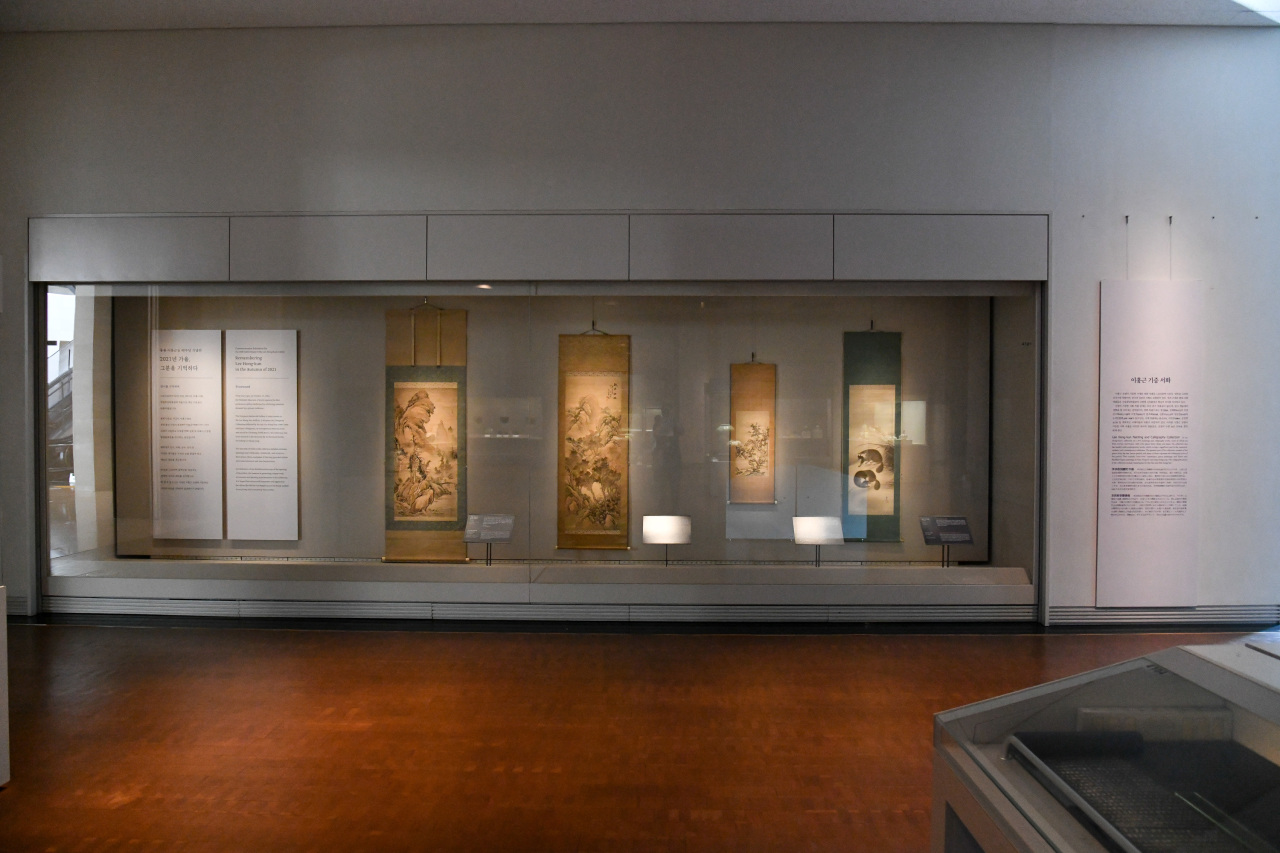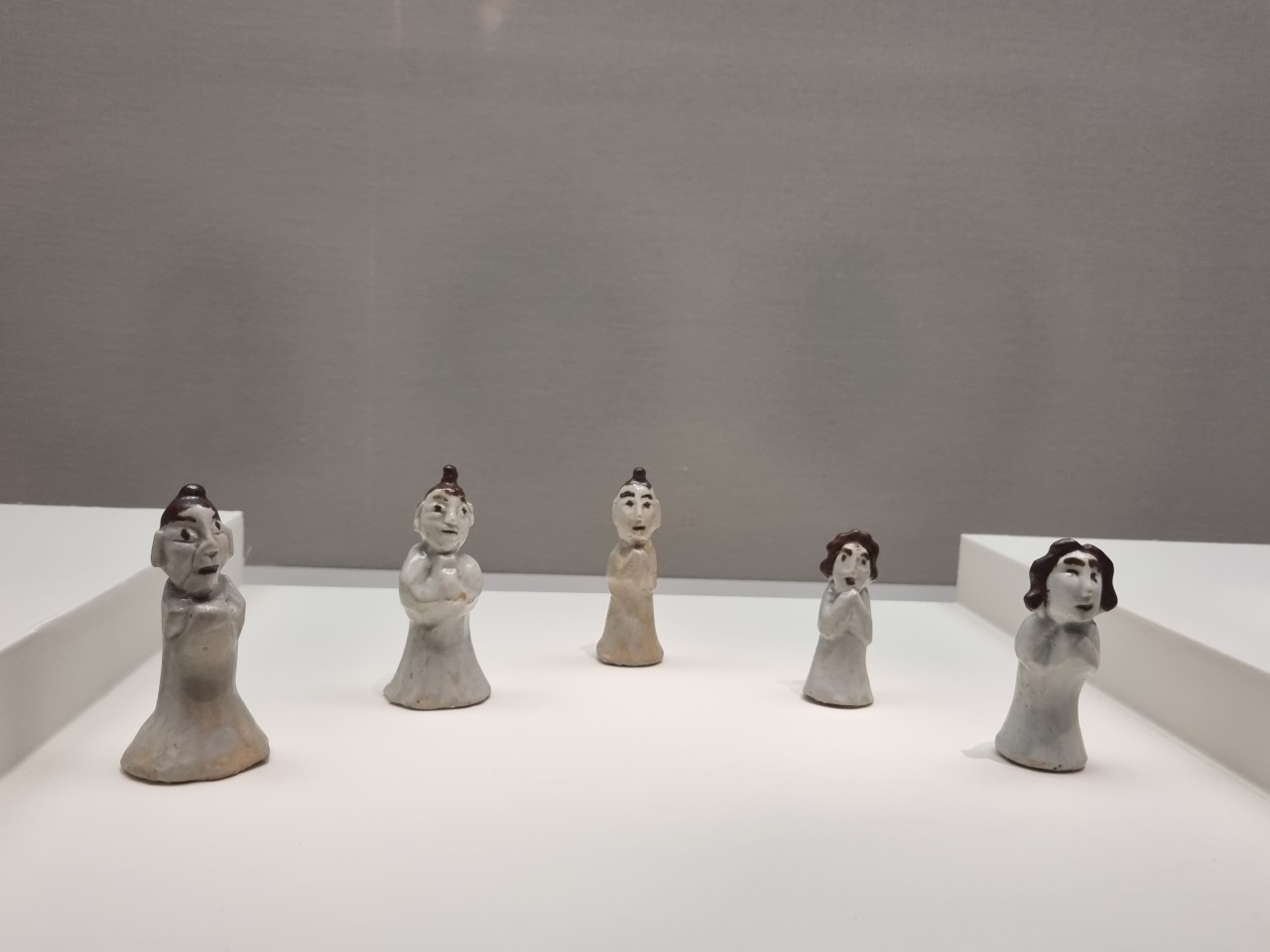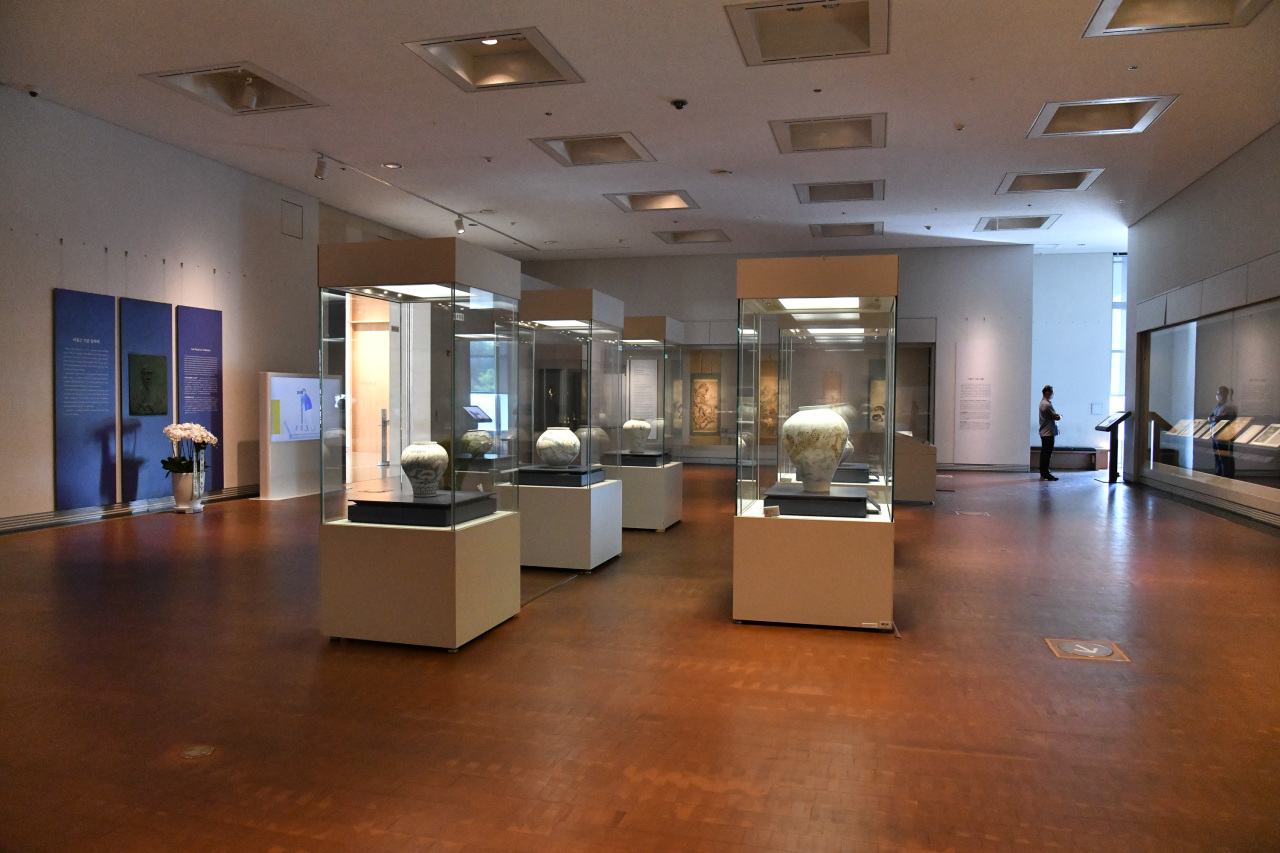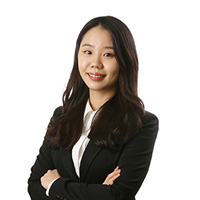Before Lee Kun-hee collection, there was Lee Hong-kun collection
By Song Seung-hyunPublished : Oct. 20, 2021 - 18:16

A special exhibition “Remembering Lee Hong-kun in the Autumn of 2021” is being held at the Lee Hong-kun Gallery of the National Museum of Korea.
The exhibition, which will run through the end of this year, is being held to mark the 40th anniversary of the establishment of donator Lee Hong-kun’s exhibition hall at NMK back in 1981.
“At the time, 4,941 artworks were thought to have been donated,” NMK curator Lee Su-kyung said. After receiving them, the museum sorted the donated items in accordance with its standards and found that a total of 10,202 items had been donated by Lee.
“An individual donating more than 1,000 pieces was sensational back then. Like how Lee Kun-hee’s donation drew a lot of people’s attention this year, many people came to see Lee Hong-kun’s collection, so we had to extend the exhibition period,” the curator added.
Lee was a businessman from Kaesong, just beyond the border in North Korea, and he collected diverse works encompassing ceramics, paintings and sculptures. Lee’s second son Lee Sang-yong and other family members donated all of his collection after his death, in accordance with Lee Hong-kun’s will.
“He had been collecting since the Korean War. There are two theories about why he started collecting these artworks. One says that as a businessman he visited many Japanese households during the Japanese colonial period and he found out that Japanese people have a special room for artworks. This made him realize that Koreans should also love and cherish our own culture,” curator Lee said.
She added that another theory is that he started collecting items because of his eldest son that he left behind in Kaesong during the Korean War.
Among his collection, the curator brought attention to the many valuable paintings and ceramics. Pieces that can show the seasonal fall mood were selected to be displayed at the gallery for this exhibition.
The exhibition begins with the painting “Dwelling in the Autumn Mountains” by Sim Sa-jeong (1707-1769) of the Joseon era.
“Up until the 1970s, Sim Sa-jeong’s paintings were valued more than that of Jeong Seon’s (1675-1759),” the curator said. She explained that these days Jeong’s artworks are valued more due to his contribution to Korean culture as a Korean landscape painter, but up until the 1970s, Sim’s paintings were considered to have more value due to his outstanding and unique painting techniques.
In the hall, there are also paintings of Chinese and Japanese artists. The curator added that Lee collected the items after consulting with art historians from Kaesong, including Hwang Soo-young.
Another notable item in the hall is “Inner Mt. Geumgangsan Viewed from Jeongyangsa Temple” created by Jeong Su-yeong (1743-1831), a scholar of the late Joseon era. The painting is part of the book that he created after touring Geumgangsan.
Ceramics are also important items in his collection, which includes pieces like “White Porcelain Bowl With Inlaid Lotus and Scroll Design,” which is designated as a national treasure. Many of his ceramic collections show how Korea’s ceramic-making techniques developed.
The curator explained that specific work is not in the Lee Hong-kun Gallery and is displayed in the Buncheong Ware and White Porcelain Gallery of the museum, which has been holding an exhibition about representative ceramics of the Joseon era.

“Many of Lee’s ceramic collections had to be displayed at the Buncheong Ware and White Porcelain Gallery as they are crucial works that show the history of porcelain’s development in Korea,” the curator said.
Among many ceramic artworks, Lee’s favorite item was “Burial Figures,” which are small white porcelain pieces in human-figure statues, according to the curator. These ceramic items were buried together with the deceased, out of a wish that the spirit would enjoy blessings and pleasure in the afterlife.
“These burial figures are especially loved by Lee Hong-kun. Someone stole the pieces once and he went to search for them with the Jongno police officers himself,” Lee said.
At the end of the exhibition, the audience can watch a short video about Lee and his collection. The video explains how his family, including his son and wife, worked together to preserve the valuable collection.








![[Graphic News] More Koreans say they plan long-distance trips this year](http://res.heraldm.com/phpwas/restmb_idxmake.php?idx=644&simg=/content/image/2024/04/17/20240417050828_0.gif&u=)
![[KH Explains] Hyundai's full hybrid edge to pay off amid slow transition to pure EVs](http://res.heraldm.com/phpwas/restmb_idxmake.php?idx=644&simg=/content/image/2024/04/18/20240418050645_0.jpg&u=20240419100350)






![[From the Scene] Monks, Buddhists hail return of remains of Buddhas](http://res.heraldm.com/phpwas/restmb_idxmake.php?idx=652&simg=/content/image/2024/04/19/20240419050617_0.jpg&u=20240419175937)

![[KH Explains] Hyundai's full hybrid edge to pay off amid slow transition to pure EVs](http://res.heraldm.com/phpwas/restmb_idxmake.php?idx=652&simg=/content/image/2024/04/18/20240418050645_0.jpg&u=20240419100350)

![[Today’s K-pop] Illit drops debut single remix](http://res.heraldm.com/phpwas/restmb_idxmake.php?idx=642&simg=/content/image/2024/04/19/20240419050612_0.jpg&u=)